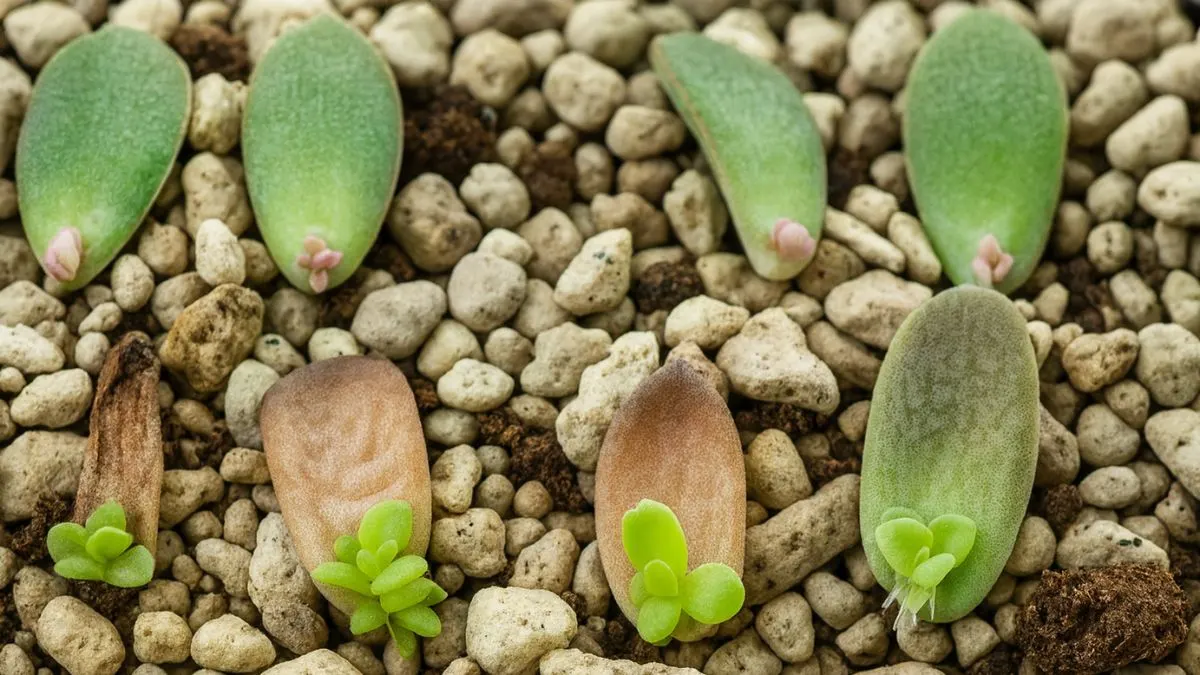There’s something magical about watching a single leaf transform into a brand-new plant. Unlike seeds, which take time to sprout, leaf cuttings are prepared by taking a single leaf from the plant and giving it the right environment to grow roots. Soon, you’ll have a whole new plant without spending extra money at the nursery.
What Are Leaf Cuttings?

Leaf cuttings are a simple propagation technique where:
- You select a healthy leaf, take a cutting with a petiole (stem), and place the bottom in a moist rooting medium like vermiculite or cactus soil.
- The cuttings will begin growing roots from the nodes within a week, depending on the plant and environment.
- It’s an eco-friendly and cost-saving way to create multiple plants from one.
There are two main types of cuttings:
- Leaf cuttings: Direct use of a whole leaf or leaf section.
- Leaf-bud cuttings: These are merely short-stem cuttings with one leaf and a bud, allowing faster growth.
Also Read: 10 Drought-Proof Plants That Thrive Without Constant Watering
Plants Which Can Be Successfully Propagated from Leaf Cuttings
Not all plants grow from leaf cuttings. Some species thrive in this method, making them perfect for home gardeners:
1. Aloe Vera
- Easy to grow and care for.
- Snip off a healthy leaf, let the cut end callus for a day, then place it in cactus soil.
- Known for its medicinal uses and ability to grow in minimal care.
2. African Violets
- These are classic houseplants for leaf propagation.
- Take a fresh leaf with a bit of stem and place it in moist soil.
- In a few weeks, you’ll see baby plants forming at the base.
3. Begonias
- Begonias propagate easily from cuttings.
- Even sections of leaves can sprout roots.
- Their vibrant foliage makes them perfect for indoor decoration.
4. Kalanchoe
- A succulent that grows well from leaves.
- Allow the cutting to dry for a day before planting to prevent rot.
- Best grown in bright light and minimal water.
5. Sansevieria (Snake Plant)
- Cut a leaf into sections of about 3–4 inches.
- Place upright in soil or water until roots develop.
- Extremely hardy and loved worldwide for its air-purifying qualities.
Also Read: Petunias: The Flower That Turns Any Balcony Into a Blooming Paradise
Step-by-Step Guide: How to Grow Plants by Leaf Cuttings
Step 1: Select a Healthy Leaf
Always start with a disease-free, vibrant leaf. Leaf cuttings are prepared by taking a single leaf from the plant or a section with a petiole.
Step 2: Cutting and Preparation
- Use sterilized scissors or a knife.
- Trim cleanly without crushing the tissue.
- Some plants benefit from letting the cut edge dry before planting.
Step 3: Choose the Right Medium
The best medium is moist rooting medium like vermiculite or cactus soil. This ensures aeration and prevents waterlogging.
Step 4: Planting
- Insert the leaf about an inch deep into the soil.
- Mist lightly to maintain humidity.
- Place in bright but indirect sunlight.
Step 5: Care During Rooting
- Maintain moisture, but don’t overwater.
- Covering the container with a plastic bag can help maintain humidity.
- The cuttings will begin growing roots from the nodes within a week or two.
Also Read: Football Lily: The Explosive Flower That Blooms Like Fireworks!
Soil vs. Water Propagation
Method |
Advantages |
Disadvantages |
Soil (vermiculite, cactus soil) |
Mimics natural conditions, long-term growth |
Risk of rot if overwatered |
Water |
Easy to observe root growth |
Transplant shock when moved to soil |
Tips for Successful Leaf Cutting Propagation
- Always use a healthy leaf for the best results.
- Leaf-bud cuttings are merely short-stem cuttings, but they root faster.
- Avoid direct harsh sunlight during early stages.
- Plants which can be successfully propagated from leaf cuttings often prefer a humid, warm environment.
- Be patient—different plants root at different speeds.
Personal Experience
When I first tried leaf cuttings with African violets, I wasn’t sure it would work. But within three weeks, tiny plantlets sprouted from the base of the leaf. Later, I experimented with Sansevieria—cutting a single leaf into three parts. All sections rooted successfully, and today I have multiple snake plants across my living room and office.
This method gave me confidence to try more, like begonias and aloe vera, proving how simple propagation can be.
Common Mistakes to Avoid
- Using old or diseased leaves.
- Overwatering, which leads to rot.
- Not providing enough light—remember, zinnias thrive in full sunlight, requiring at least six hours of direct sun each day, and while leaf cuttings need indirect light, they still need brightness.
- Planting too deep.
Growing plants by leaf cuttings is one of the most rewarding propagation methods.
👉 Try it today—experiment with one plant, watch roots form, and enjoy the magic of propagation. Soon, you’ll not only save money but also experience the joy of creating new life from a single leaf.






